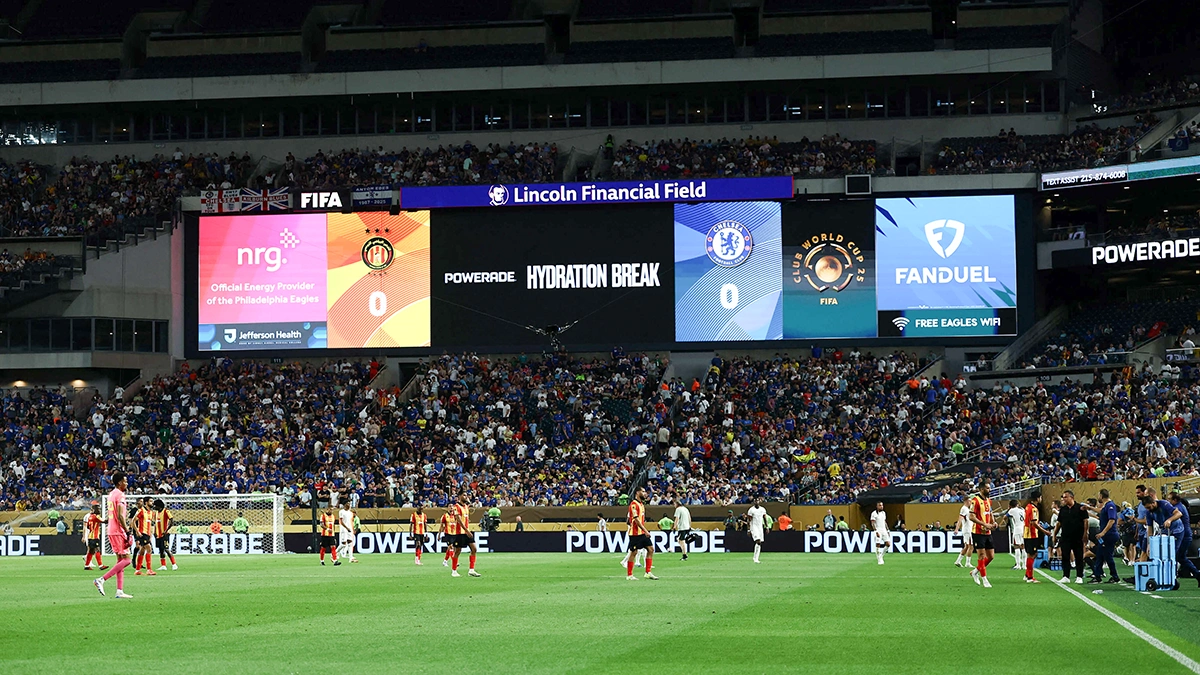Club World Cup affected by extreme heat: climate change threatens the 2026 World Cup

High temperatures and thunderstorms are disrupting matches at the Club World Cup in the United States, raising concerns that this could happen again during the 2026 tournament.
In response, coaches and players are taking steps to adapt to the difficult weather conditions, while research warns of the health risks to both players and fans due to the weather. Adapting to the climate has therefore become a key task for coaches and players.
One of the best examples is that of German club Borussia Dortmund, which has decided to keep its substitute players in the dressing room during the first half of its match against South Africa's Mamelodi Sundowns in Cincinnati. Another case is that of Chelsea's Italian coach, Enzo Maresca, who stopped his team's training session in Philadelphia on Monday as the temperature reached 37.2 degrees Celsius, 7 degrees above the FIFA stipulated limit for a break.

Sixteen cities will host the World Cup next year, amid predictions of potentially extreme temperatures. In Dallas, one of the host cities, temperatures exceed 28 degrees Celsius on more than 80% of days in June and July.
Although the slightly higher temperatures at midday had a clear effect on the tournament during the matches played at that time, German club coach Nico Kovac said he ‘believes that this competition will not be won by the best team, but by the one that adapts to these weather conditions, and that will most likely be the winner.’
Although hydration breaks in the middle of matches have become the norm during the tournament, Dortmund and other teams are implementing additional strategies to alleviate the impact of the heat and humidity. ‘Our players are under very rigorous medical care. We have taken the necessary precautions and are doing everything we can to make the right choices and protect them,’ said Kovac.

The experience of the Club World Cup could be a preview of what players and fans will face in next year's World Cup final, which will take place in the United States, Canada and Mexico.
Across the pond, in the city of Girona, the England national team, which is preparing for its match against Andorra, is using thermal tents to assess the players' response and recovery after training in hot and humid conditions.
Player safety is at risk
A recent study published in the International Journal of Biometeorology highlighted the risks that extreme heat poses to players and spectators, given that climate change is causing ‘more frequent and intense’ heat waves. The study found that 14 of the 16 cities hosting the 2026 World Cup are experiencing temperatures that far exceed acceptable safety limits according to the WBGT index, which is a common measure of heat exhaustion.

The study suggested that matches should be scheduled at times other than in the afternoon, when temperatures are highest. In addition to extreme heat and humidity, five Club World Cup matches were cancelled due to possible thunderstorms.
Tuesday's match between Argentina's Boca Juniors and New Zealand's Auckland City became the fifth match of the tournament to be delayed. The match between Benfica and Auckland was postponed for almost two hours due to weather conditions.
Ben Schott, a member of the National Weather Service who advises FIFA and the 2026 World Cup team, said this type of weather is not unusual and that everyone should be ready for it next year.

‘What we're seeing right now is not unusual, even though we're setting records,’ Schott told AFP. ‘Most of the eastern United States is breaking records, and that happens almost every summer. So something similar is expected next year, and those planning to attend the matches should be prepared.’ Although the heat was a challenge when the United States hosted the World Cup in 1994, no matches were cancelled due to storm warnings.








